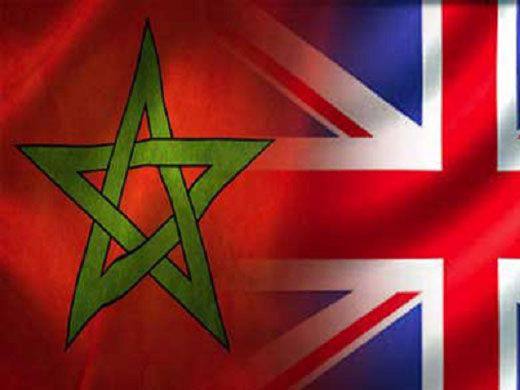[symple_box]
 Dr. Mohammed Maarouf is a Professor of Ethnography and Cultural Studies at Chouaib Doukkali University, Morocco. [/symple_box]
Dr. Mohammed Maarouf is a Professor of Ethnography and Cultural Studies at Chouaib Doukkali University, Morocco. [/symple_box]
Why Muslim Radicals kill Western Civilians: “They have sown the wind, they shall reap the whirlwind”
Acts and discourses on martyrdom show that vendetta plays an important role in mobilizing some Muslim youth to avenge their brothers and co-religionists all over the Islamic umma, which facilitates the works of fundamentalist ideologues and organizations (no need to refer to the intelligence war in this respect). They act out of a sense of duty toward the Islamic nation of which they imagine themselves to be members. Vendetta, which modernity, according to Bauman (2005), has tried to replace with the consumerist concept of financial compensation for damage, loss, or personal injury (a sort of refinement of blood money, or ddiya), is the familiar pre-modern cultural practice that stems from the segmentary social background structure of Arab societies and their culture of tribal solidarity.
Historically, vendetta was mobilized by the social solidarity of the tribe, a group feeling named by Ibn Khaldun in his Muqqadima (Introduction) al ‘asabiyya. It emerged among people when they needed to manage their group survival in sedentary communities by borrowing tools, animals, and hand labour from each other. In nomadic social contexts, it emerged through people’s collective wandering in search of pasture and their protection of flocks from natural predators and theft. According to al-Jabiri ([1992] 2007, 165), by al-‘asabiyya Ibn Khaldun does not mean a framework organizing social relations in a tribe; instead, it appears to be a mode of defence playing a role tantamount to the army or castle walls in the fortification of a city. It is a resistance bond, a counter-force organizing the intertribal relations of local communities and their relation with the centralized state.
Historically, the tribe was the basic unit of the social fabric in North Africa. The ruling elite often stemmed from a particular tribe, or a section of it, or from tribal alliances. The cultural resource that the family striving for power relied on was the tribal ‘asabiyya (group feeling or social cohesion). Al-‘asabiyya does not depend on external social, political, or economic factors for its existence. It is not the product of some sort of tribal contract or wilful undertakings. Its existence is tied to the existence of the people that enforce it and bequeath it to their descendants. This tribal feeling or sense of belonging is not easily affected by changes in the social context. Even though the members may travel abroad and no longer live with the rest of the community, or some of them are dead, those who are alive prove their fond regard for the same group, forming one transcendental unified whole (see al-Jabiri [1992] 2007, 167).
Al-‘asabiyya is a social psychological bond, conscious or not, that unifies the members in an alliance based on kinship; it may be intensified under conditions of menace, especially when one member or the community as a whole is threatened. In other words, it is a melting pot of individual tendencies. This does not mean only that an individual cooperates with another individual within the same social group. It means that when the
group defends an individual, it defends itself, and one who threatens the unity of the group is cast out or punished. Al-‘asabiyya is an existential fusion, a merger of the self in the group in that the collective interest becomes one’s own interest, so the individual identity is annihilated if the group is dispersed.
Religion extends this group feeling beyond family and regional attachments to embrace loyalty to all Muslim communities sharing the same faith. Religion thus transfers the cultural schema of devotion to a new attachment, from the realm of the tribe to the realm of the umma (the Islamic nation). Religious ‘asabiyya is more than a unification of kinship; it is a social cohesion fortified by the unity of faith, which renders the ‘asabiyya invincible. Religious ‘asabiyya lubricates Muslims’ sympathy with other distant Muslims in distress and makes them identify with other Muslims’ suffering; it fuels the emotional state of vengeance and denigration Muslims may feel as an audience at a public event during which other Muslims endure mortification.
A case in point is the video script diffused by al-Qaeda in Iraq in 2006 under the title of Fatima’s Fiancé; it shows Abu Muawiyah al-Shimali, a Saudi suicide bomber, who responds to the call initiated by a female prisoner named Fatima, who sent a letter in December 2004 to plead with the mujahids to come to their rescue because of their subjection to daily rape, torture, and humiliation “by the sons of pigs and monkeys.” Al-Shimali is represented as an angry fighter who could not calm down and swore to redeem the honour of his sisters. His religious ‘asabiyya arouses in him the strong desire to martyrize himself to revenge his sisters, and he volunteers to detonate himself to avenge Fatima’s death, supplicating Allah to wed him to her in paradise.
In a word, vendetta has historically transcended tribal boundaries with the appearance of faith brothers in Islam. Brotherhood in faith has pushed Muslims to provide aid to each other in charity and jihad though they do not belong to the same lineage or know each other personally; rather, they believe that they all descend from Muhammad’s umma, the common lineage of faith.
This does not mean that egoistic interests should be ruled out of the analysis of suicide bombers. There are many cases of suicide bombers like al-Shimali who take this route to overcome social marginalization, anomie, or lack of self-esteem due to past wrongdoings (Khosrokhavar 2005; Pedahzur 2005) or to search for companionship (Sageman 2004, 2008a; Wintrobe 2006). Thus, those who participate in a suicide mission, in defiance of the cost of death, yearn to obtain social consideration and reputation among their comrades. This is akin to rank elevation, which may intimate that suicide missions are practical actions that may also be motivated by rational choices.
In the Islamic majority’s representation of martyrdom, the main motivational factors underlying martyrs’ voluntary decision to self-sacrifice are affective: a desire to restore their lost honour and erase the stigma of shame and humiliation they may suffer from their enemy, be it local or foreign. Usually, the enemy is local, epitomized in an authoritarian regime that the voices of opposition are unable to challenge; in that case, local grievances may be endowed with global meanings, and ill will is expanded to foreign agency with conspiratorial motivations.
Jihadists’ attacks are often stirred by moral outrage rather than by overt political resistance. Their message of redemption to quell scenes of overindulgence and debauchery is mediated through violence. It is never a peaceful message of change but a bloody scene in which the redeemers use their lives as weapons to suppress dissipation; suffice it to say that it is a drastic reproduction of the cultural mechanism of self-defence called self-flagellation used in the face of oppression.
It is a critical chapter in the history of cultural resistance on the contemporary international scene when the awakening of the subalterns breeds violence in search of social justice. Jihadists also rationalize the permissibility of killing civilians of any faith if they serve as human shields. Islamic principles decree that you repel the greater harm with the lesser harm if one or the other is unavoidable. If the benefit from killing these shields is indisputably clear, it is permissible to attack the enemy being shielded if there is no other way to do it (see Hafez 2010). The killing of Westerners is further legitimated by their democracies. The civilians have the power to influence their governments’ foreign policy in the Middle East and withdraw their troops from Islamic lands. They are legitimate targets so far as they accept their governments’ decisions. This reminds us of World War II, when many British people believed that German civilians should accept responsibility for the actions of the Nazi regime. Charles Townsend quotes Churchill as saying, “They have sown the wind, they shall reap the whirlwind” (2002, 8).
Despite the altruistic aims stated in jihadist discourses, Average Muslim respondents do not glorify acts of suicide against nominal Muslims, western civilians or what they call “innocent people,” in general, for according to them no one has the right to judge whether another is or is not a true believer. Their social approval is mostly granted to those martyrs who self-sacrifice themselves for the liberation of their own land, as in the case of the Palestinians who defend their country against the hostile Israeli occupation (to be followed).






